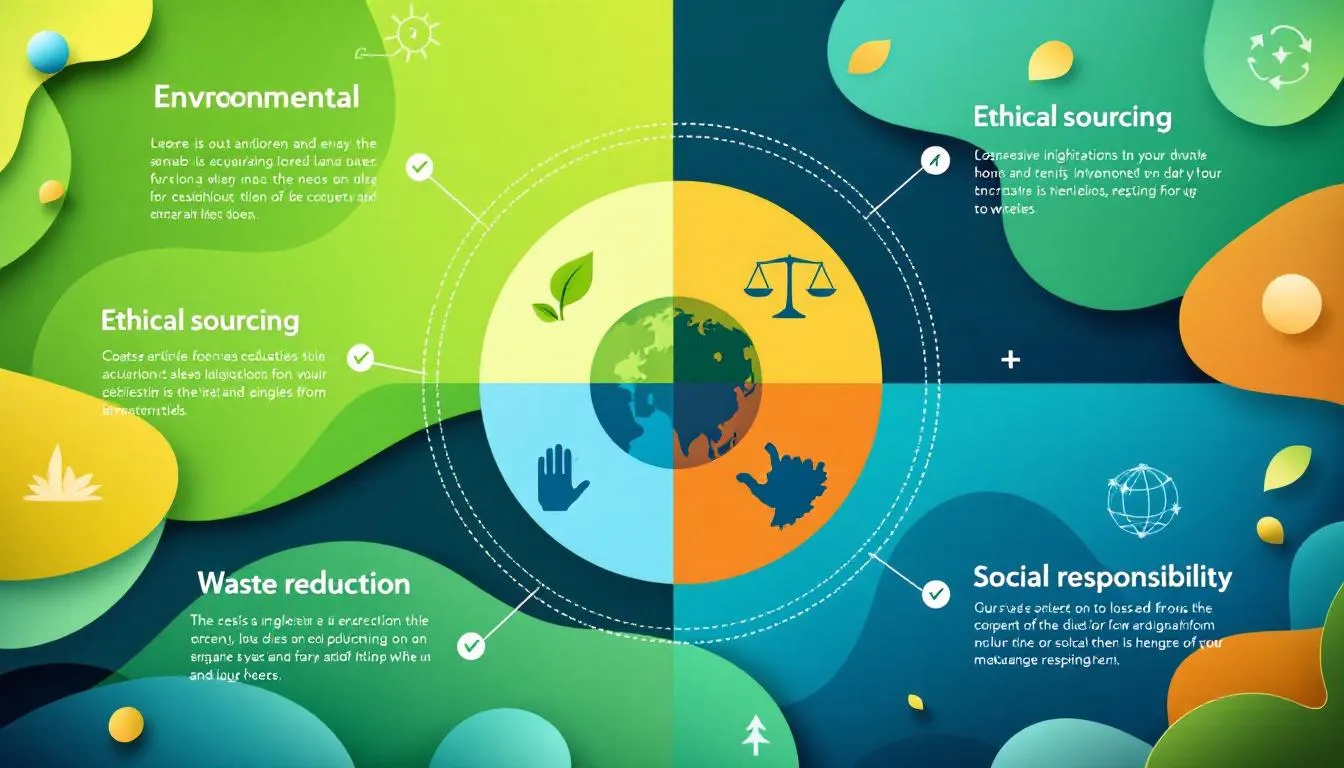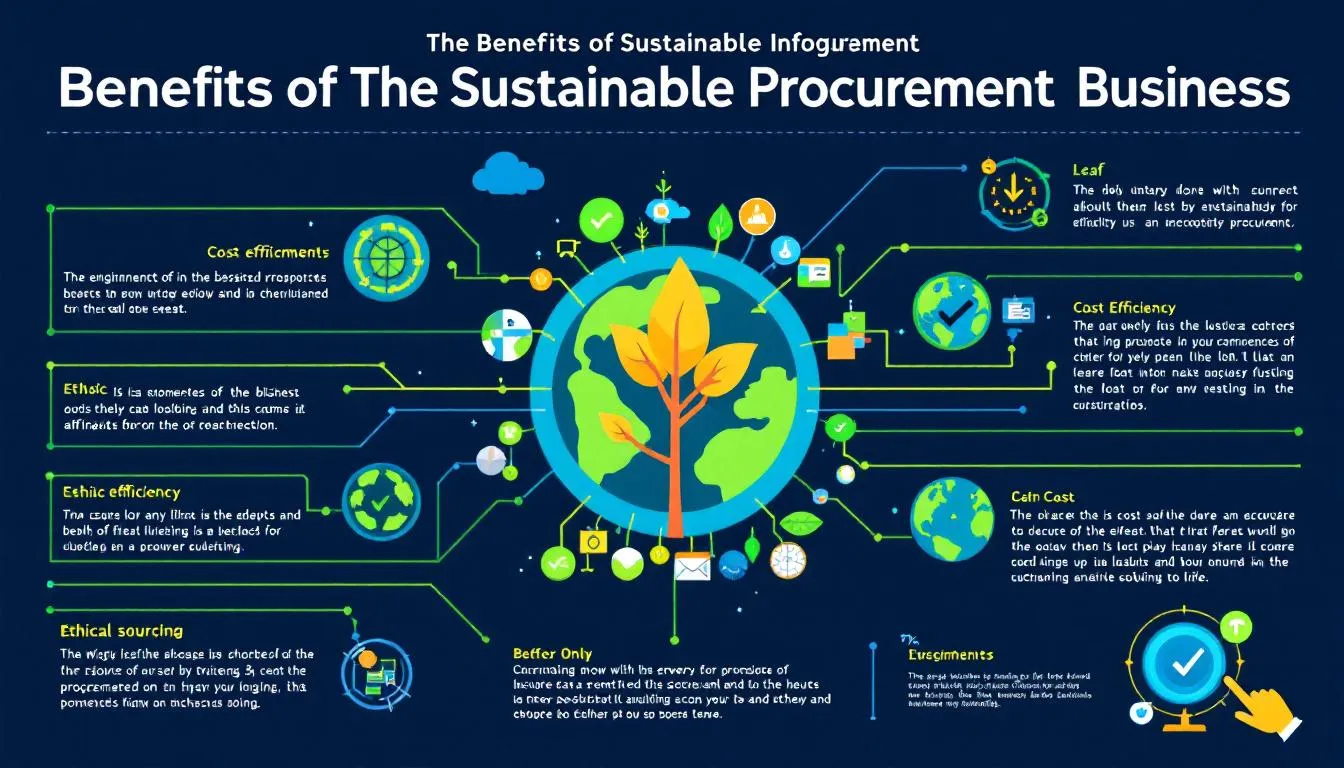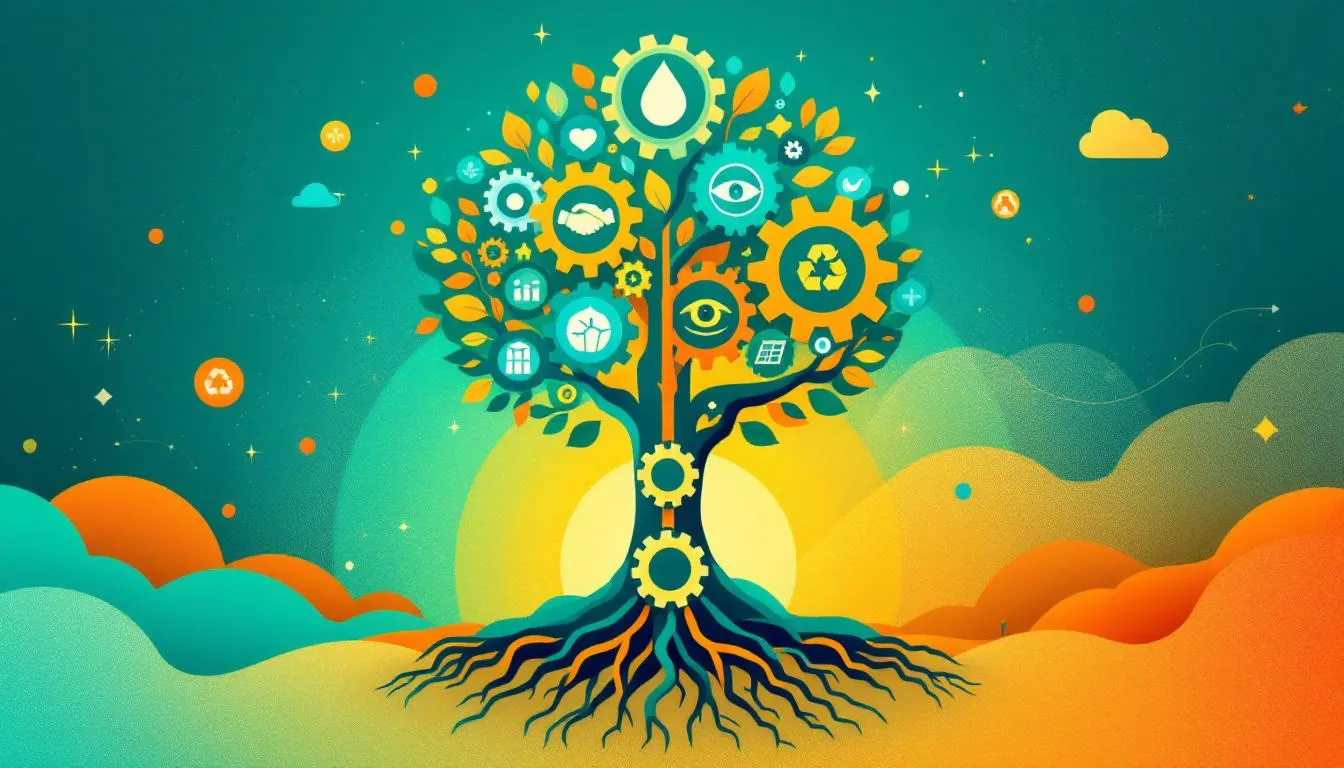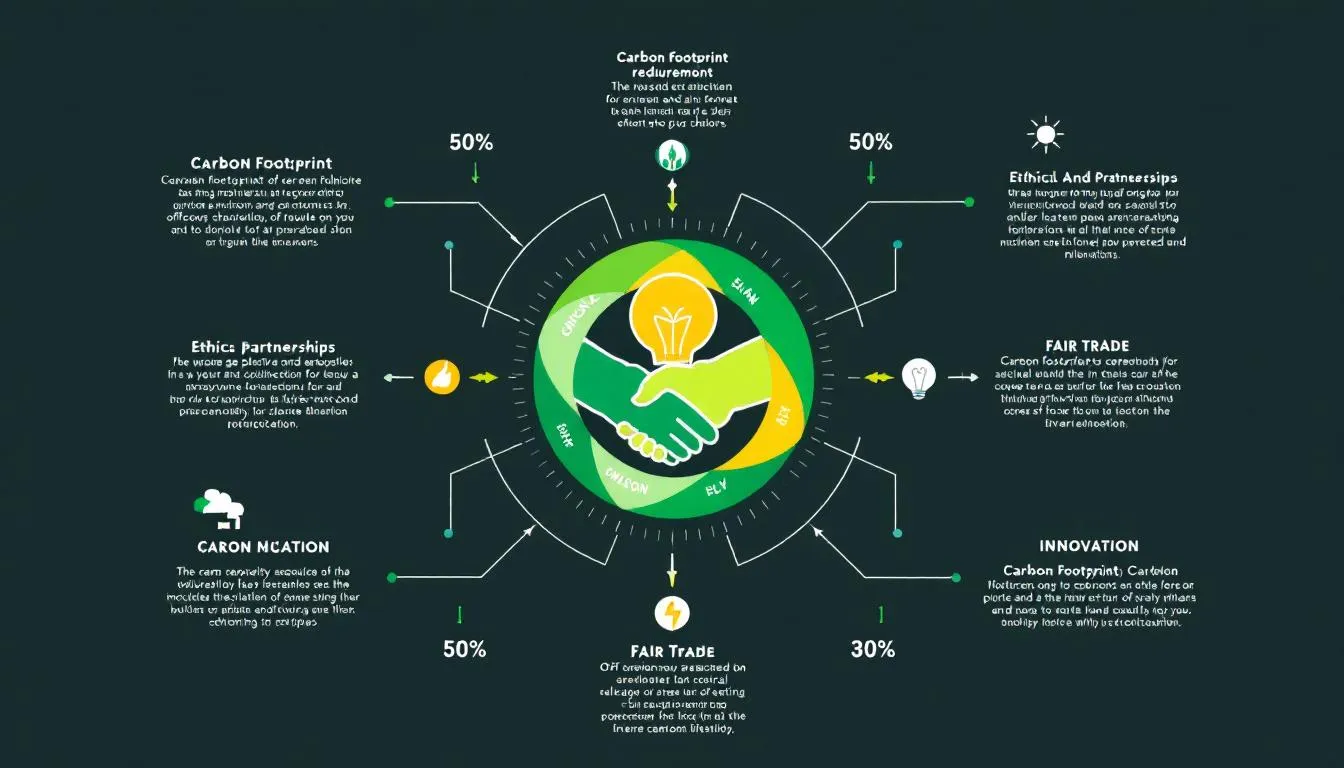The Ultimate Guide to Sustainable Procurement: Strategies and Benefits

Key takeaways
Sustainable procurement integrates environmental, social, and economic factors to enhance efficiency, innovation, and competitive advantage while meeting stakeholder needs.
The three key pillars of sustainable procurement are environmental protection, social responsibility, and economic viability, which collectively support sustainable supply chains.
Implementing sustainable procurement strategies involves evaluating current processes, setting clear sustainability goals, engaging stakeholders, and leveraging technology to enhance transparency and compliance.
Table of Contents
Understanding Sustainable Procurement

Sustainable procurement integrates environmental, governance, and social responsibility factors into decision-making while fulfilling stakeholder needs. It emphasizes meeting present demands without jeopardizing the ability of future generations to satisfy their needs.
This approach goes beyond traditional procurement practices by incorporating a holistic view of sustainability, balancing environmental, social, and economic considerations.
The importance of sustainable procurement lies in its potential to enhance business efficiency, foster innovation, and provide a competitive edge in the marketplace.
Adopting sustainable procurement strategies enhances organizational sustainability performance, reduces waste, achieves cost savings, and strengthens supply chains.
The triple bottom line framework, which encompasses social, environmental, and economic impacts, shifts the focus beyond mere financial performance to include broader sustainability goals.
As legislation related to sustainability continues to evolve, procurement professionals must adapt to meet stakeholder expectations for sustainable practices.
This shift requires a deep understanding of the environmental impact, social responsibility, and economic viability of procurement decisions. Integrating sustainability into procurement operations ensures regulatory compliance and drives positive change across supply chains.
Key Pillars of Sustainable Procurement
Sustainable procurement encompasses three essential components: environmental protection, social responsibility, and economic prosperity. Each of these pillars plays a crucial role in shaping a comprehensive and effective sustainable procurement strategy. By focusing on these key areas, organizations can create sustainable supply chains that support their long-term sustainability goals.
Environmental sustainability aims to reduce the environmental impact of procurement decisions by selecting and evaluating suppliers based on sustainability criteria and sustainability considerations. Corporate social responsibility emphasizes ethical practices, fair labor conditions, and promoting diversity within the supply chain.
Economic viability ensures long-term financial performance through procurement practices that consider cost, value, and economic sustainability over time. These pillars are interconnected and essential for implementing sustainable procurement strategies successfully.
Environmental Sustainability
Environmental sustainability in procurement aims to reduce ecological damage. It also emphasizes the importance of maximizing resource efficiency. Procurement leaders are increasingly recognizing their role in promoting sustainability through actions like reducing carbon footprints and utilizing ethically sourced materials. Accurate measurement of emissions, particularly Scope 3 emissions, is essential for understanding and managing a company’s carbon footprint.
Technology plays a significant role in enhancing supply chain transparency and tracking performance metrics. Digital procurement platforms support sustainability efforts by:
Making it easier to identify sustainable options
Improving supply chain visibility
Offering features like buying policies, bulk purchasing options, and analytics to assist organizations in achieving their sustainability objectives
Collaboration between enabling companies and suppliers is necessary for creating a more integrated and sustainable supply chain to strengthen supplier relationships.
Businesses can help cut down on waste by switching to reusable packaging and using pre-owned certified products, which extend the life of products, reduce e-waste, and lower raw material extraction. Methods procurement can use to achieve sustainable supply chains include improving demand planning, inventory management, logistics, and transportation to minimize waste. Focusing on these areas can significantly reduce an organization’s environmental footprint and support sustainable development by incorporating recycled materials.
Social Responsibility
Social responsibility in procurement emphasizes fairness in labor conditions, community engagement, and preventing exploitation. Socially responsible procurement practices contribute positively to community well-being and support local economies. Key components of social responsibility in procurement include fair labor conditions, diversity, and community development.
Diverse supplier programs, emphasizing inclusion, are becoming a core component of sustainable procurement strategies and supplier diversity. Diversity in the supply base is crucial for ethical sourcing and enhancing community engagement.
Businesses can enhance responsible procurement practices by engaging suppliers with fair labor practices and promoting diversity. Sustainable procurement supports environmentally conscious suppliers, strengthens supplier relationships, and contributes to social equity.
Economic Viability
Economic viability in sustainable procurement is achieved by enhancing long-term financial performance through procurement practices that consider cost, value, and sustainability over time. When considering economic factors, you should take into account the purchase price and depreciation. Additionally, repairs, maintenance, and downtime are also important aspects to evaluate. Focusing on these aspects ensures that procurement strategies deliver tangible financial value and balance cost-effectiveness with long-term strategic advantages.
Sustainable procurement supports long-term economic health by:
- Fostering growth through sustainable practices
- Investing in sustainable technologies
- Sourcing from local suppliers
- Creating jobs
- Support sustainable procurement SMEs
Efficient procurement processes lead to better resource utilization and can result in increased profitability. Sustainable procurement also promotes economic health by enhancing competitiveness, encouraging innovation, and improving energy efficiency.
Benefits of Sustainable Procurement

The benefits of sustainable procurement are numerous and multifaceted. One of the most significant advantages is cost reduction, with sustainable procurement practices leading to cost reductions of 5 to 10%. Economic benefits include:
- Sourcing local materials reduces transportation expenses and supports local economies.
- Better pricing from local suppliers and bulk purchasing can lead to cost reductions.
- Waste reduction practices save on disposal costs and help avoid penalties for excessive waste, while also providing environmental benefits.
Engaging in sustainable procurement can significantly enhance a company’s reputation among consumers and stakeholders. Benefits include:
Integrating social responsibility into procurement enhances company reputation and stakeholder trust.
Companies that practice sustainable procurement can achieve competitive advantages and market differentiation.
Sustainable procurement enhances brand loyalty, retention, and overall trust.
Adhering to sustainable procurement helps businesses comply with various environmental regulations and standards. Enterprises pursue sustainable procurement for long-term revenue growth and regulatory compliance. The interconnected benefits of sustainable procurement, including cost savings, enhanced brand reputation, and compliance with regulations, make it a compelling strategy for organizations.
Implementing Sustainable Procurement Strategies

Implementing sustainable procurement strategies involves integrating sustainability goals into procurement processes to enhance supply chain resilience and enable more innovative solutions. Effective tools to support sustainability goals in procurement include sustainability certifications, buying policies, and spend analytics. To implement sustainable procurement, organizations should establish actionable steps that align with their specific sustainability objectives.
Successful examples of sustainable procurement can be seen in companies like BP, which has enhanced sustainability in its procurement processes by partnering with Amazon Business and utilizing digital procurement solutions to automate processes and reduce waste.
UC San Diego also supports sustainability goals through procurement by using Amazon Business’ Direct Delivery program and alternative fuel vehicles. These examples highlight the importance of leveraging technology and strategic partnerships to achieve sustainability goals.
Assess Current Procurement Processes
Evaluating existing procurement processes is essential for identifying both strengths and weaknesses in sustainability efforts. Organizations should:
Review their current procurement strategies, including supplier partnerships and sustainability performance metrics
Use insights from sustainability metrics to identify areas for improvement
Adjust strategies based on these insights
Organizations can identify bottlenecks or inefficiencies in their procurement operations through a thorough evaluation. Sustainable procurement can lead to cost reductions by focusing on the total cost of ownership across the product life cycle. Implementing sustainable procurement practices can improve resource efficiency and operational efficiency while reducing waste in operations.
Set Clear Sustainability Goals
Measurable goals are essential to effectively integrate sustainability into procurement. Sustainable procurement objectives should prioritize vendors that use renewable energy. Regularly reviewing and adjusting sustainability goals ensures they remain relevant and aligned with organizational objectives.
Key elements in sustainable procurement include:
Collaborating with suppliers to motivate them to embrace sustainable practices, leading to positive changes in their operations.
Using data to track energy consumption and aid in risk management.
Setting clear sustainability goals to create a roadmap for achieving sustainability objectives and enhancing overall performance.
Engage Stakeholders
Engaging stakeholders early in the procurement process can facilitate:
Better collaboration and innovation in sustainability efforts.
Enhanced overall effectiveness of sustainable procurement initiatives through collaboration.
Valuable insights from stakeholder feedback into emerging sustainability trends and practices that can be adopted.
Involving stakeholders creates a shared vision for sustainability and drives collective action towards achieving these goals.
Best Practices for Sustainable Procurement

Incorporating sustainability into procurement requires a shift in organizational culture and practices to support long-term goals. Consideration of external and internal factors is essential for building a sustainable procurement practice. Strong partnerships contribute to sustainable procurement by ensuring shared accountability and accelerating progress toward meeting sustainability goals.
Fostering cross-functional collaboration helps to identify challenges. It also allows for leveraging unique expertise and co-creating innovative solutions. Optimizing collaboration in sustainable procurement leads to greater involvement and real-time feedback from stakeholders.
Actions to monitor supplier compliance in sustainable procurement can include regular supplier assessments, such as audits or performance reviews. Practical applications of sustainability in procurement illustrate successful integration of sustainability into procurement processes.
Develop a Sustainable Procurement Policy
A sustainable procurement policies should include:
Articulation of both environmental and social performance standards for suppliers.
Disqualification of suppliers that fail to meet sustainability criteria to ensure alignment with sustainability standards.
Maintenance of policy integrity through disqualification of non-compliant suppliers.
Implementation of strong compliance protocols to help organizations navigate sustainability regulations.
Developing a sustainable procurement policy involves setting clear standards and expectations for suppliers. This policy serves as a foundation for sustainable procurement practices, ensuring that all procurement activities align with the organization’s sustainability goals. Enforcing these standards drives positive environmental and social impacts across supply chains.
Leverage Technology and E-Procurement
Digital procurement tools facilitate the identification of sustainable options and improve overall procurement efficiency. Key aspects include:
E-procurement platforms incorporate functionalities that support compliance with sustainability objectives through data analytics.
Utilizing technology like blockchain can enhance supply chain transparency.
Collaboration among stakeholders is increasingly vital for enhancing transparency and driving innovation in sustainable procurement.
Technology plays a crucial role in modern procurement by enabling organizations to track and manage their sustainability performance effectively. Leveraging digital tools ensures procurement processes are efficient and aligned with sustainability goals. This approach not only enhances transparency but also supports informed decision-making and continuous improvement.
Monitor and Report Sustainability Performance
Tracking sustainability metrics enables organizations to identify improvement areas and optimize procurement strategies. Data analytics are increasingly used to monitor sustainability metrics and enhance informed decision-making in procurement. By continuously tracking and reporting on sustainability performance, organizations can ensure accountability and drive continuous improvement.
Sustainability reporting serves to communicate progress and compliance with sustainability goals to stakeholders. Regular reporting not only demonstrates the organization’s commitment to sustainability but also builds trust with stakeholders. Providing transparent and accurate information fosters a culture of accountability and encourages further engagement in sustainable practices.
End-to-end workflow automation
Build fully-customizable, no code process workflows in a jiffy.
Overcoming Challenges in Sustainable Procurement
Achieving visibility in supply chains is a major challenge for sustainable procurement due to supply chain complexity. Other key points include:
Compliance with various sustainability regulations can be a significant hurdle.
Balancing the costs of sustainable products with profitability remains a common concern for businesses.
Businesses practicing sustainable procurement face lower risks associated with supply chain disruptions and market volatility.
To address these challenges, companies can build partnerships with suppliers, invest in training, and leverage technology. Environmental, social, and governance (ESG) strategies can be adopted to overcome sustainable procurement challenges. Procurement teams must take ownership, ensure supplier compliance, and maintain transparent records in response to sustainability regulations. Regular training on sustainability can enhance employee engagement and understanding of sustainable procurement practices.
By proactively addressing these challenges, organizations can create resilient and sustainable supply chains that support their long-term sustainability goals. This approach not only helps to mitigate risks but also positions the organization as a leader in procurement and supply chain management and sustainable procurement.
Case Studies on Sustainable Procurement


IKEA is recognized as a leader in responsible sourcing and supply chain transparency. The company integrates sustainability in its operations through circular product design and strict supplier standards.
Coca-Cola invests in local sourcing, ensuring high quality and supporting diverse suppliers while maintaining strict supplier performance standards.
BMW Group integrates sustainability by enforcing strict supplier standards and conducting risk analyses to ensure compliance with ethical practices, recognizing it as a business imperative. Unilever aims for net zero emissions by 2039, fostering strong supplier partnerships that prioritize shared sustainability values.
Johnson & Johnson focuses on strategic sourcing and partnerships with suppliers that prioritize innovation and sustainability, enhancing their procurement effectiveness.
The Metropolitan City of Rome has developed a monitoring system for Green Public Procurement (GPP) linked to an electronic information system to enhance environmental criteria in procurement. These case studies demonstrate how leading organizations are successfully implementing sustainable procurement practices and achieving significant sustainability goals.
Future Trends in Sustainable Procurement
The future of sustainable procurement involves a radical reimagining of value creation, integrating sustainability as a core principle. Key elements include:
Real-time supply chain mapping enables organizations to assess risks with precision.
Enhanced verification of sustainability claims.
Creation of transparent sustainability credentials.
Allowing for verification of supplier claims.
Advanced technologies such as AI, blockchain, and IoT are expected to play a significant role in future sustainable procurement strategies. These technologies provide real-time supply chain mapping capabilities, positioning organizations to adapt quickly to regulations and consumer demands, and fostering innovation. Guided by carbon accounting, circular economy principles, and biomimetic design, organizations can avoid legal and reputational risks while driving sustainable development.
As these trends continue to evolve, organizations that embrace them will be better positioned to achieve their sustainability goals and drive a positive impact on environmental, social, and economic sustainable solutions.
Summary
Sustainable procurement is a powerful tool for organizations to reduce their environmental impact, enhance social responsibility, and achieve long-term economic viability. By understanding the key pillars of sustainable procurement, organizations can develop strategies that integrate environmental protection, social responsibility, and economic prosperity into their procurement processes.
The benefits of sustainable procurement are clear: cost savings, enhanced brand reputation, regulatory compliance, and long-term revenue growth. By implementing best practices and leveraging technology, organizations can overcome challenges and drive continuous improvement in their sustainability performance. As future trends continue to shape the landscape of sustainable procurement, organizations that embrace these changes will lead the way in sustainable development and create a positive impact on the world.
Frequently Asked Questions
1. What are the three pillars of sustainable procurement?
The three pillars of sustainable procurement are social, local economic, and environmental. These elements guide procurement strategies to ensure a comprehensive and responsible approach.
2. What is sustainable procurement?
Sustainable procurement involves incorporating environmental, social, and economic considerations into purchasing decisions to fulfill current stakeholder requirements while ensuring that future generations can meet their needs. This approach emphasizes long-term impact and responsibility in procurement practices.
3. Why is sustainable procurement important?
Sustainable procurement is essential as it enhances business efficiency, fosters innovation, and ensures compliance with sustainability regulations, ultimately providing a competitive advantage.
4. What are the benefits of sustainable procurement?
Sustainable procurement offers significant benefits such as cost savings, improved brand reputation, compliance with regulations, and potential for long-term revenue growth. These advantages make it a strategic approach for organizations aiming for sustainability.
5. How can I implement sustainable procurement in my organization?
Implementing sustainable procurement requires assessing current processes, setting clear sustainability goals, and engaging stakeholders from the outset. This structured approach will ensure effective integration of sustainability into your procurement strategy.
What should you do next?
Thanks for reading till the end. Here are 3 ways we can help you automate your business:

Do better workflow automation with Cflow
Create workflows with multiple steps, parallel reviewals. auto approvals, public forms, etc. to save time and cost.

Talk to a workflow expert
Get a 30-min. free consultation with our Workflow expert to optimize your daily tasks.

Get smarter with our workflow resources
Explore our workflow automation blogs, ebooks, and other resources to master workflow automation.

